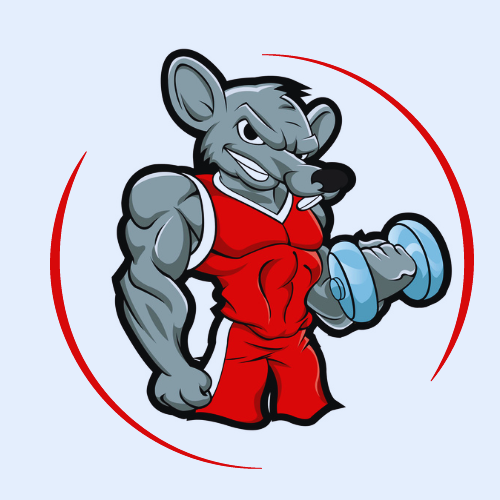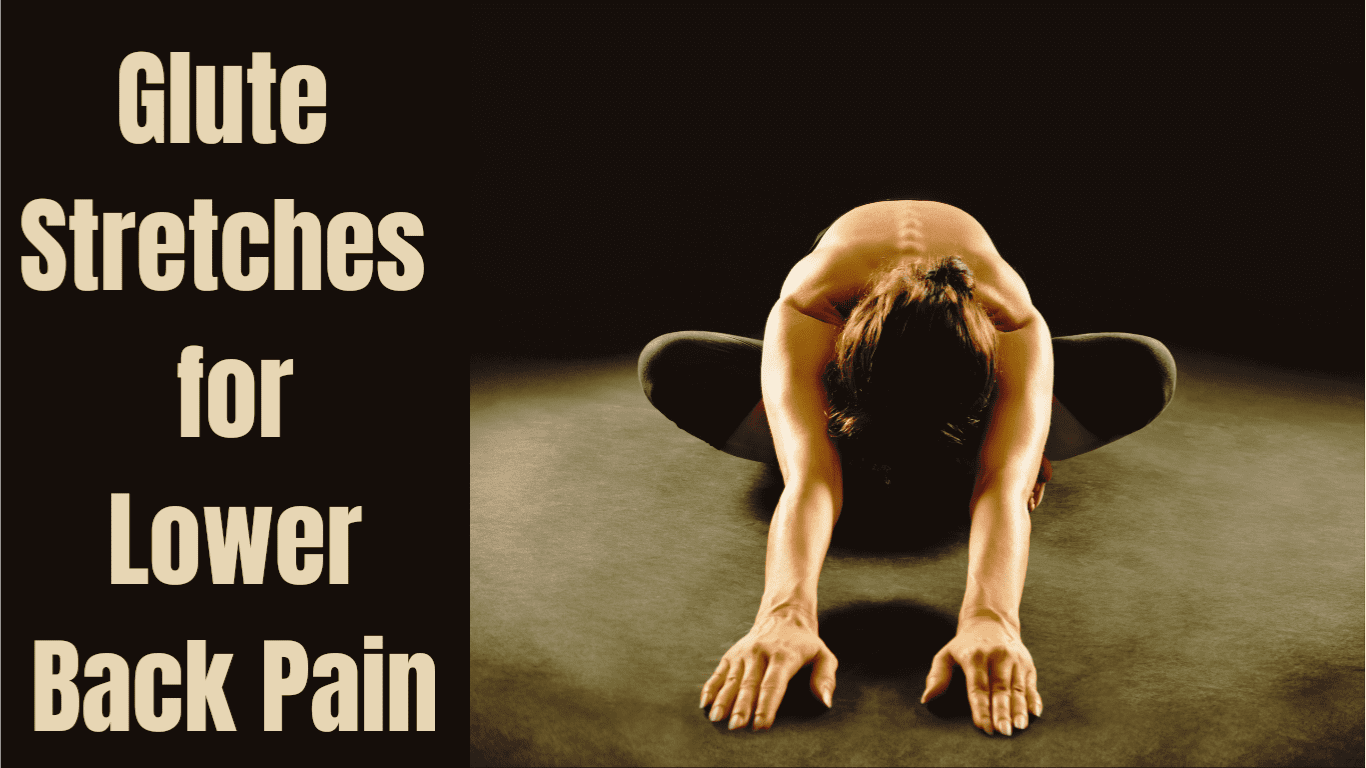Maximizing Back Strength: The Ultimate Resistance Bands Back Workout Guide
Explore the power of a Resistance Bands Back Workout! Enhance your back muscles with these effective exercises using versatile resistance bands.
Unlocking a powerful back isn’t reserved for the gym’s clanging weights. Enter the world of resistance bands, where strength meets versatility for a back workout like no other. As a personal trainer, I’ve seen firsthand the incredible results that can be achieved with resistance bands. Today, I’m excited to take you on a journey through the realm of resistance bands back workouts, showcasing their effectiveness and accessibility for all fitness levels.

Before we dive into the nitty-gritty of resistance bands back workouts, let’s take a moment to understand why a strong back is crucial for overall fitness and posture. Your back muscles play a pivotal role in nearly every movement you make, from lifting groceries to maintaining proper posture throughout the day. A strong back not only enhances athletic performance but also helps prevent injuries and alleviate chronic pain. Neglecting your back muscles can lead to imbalances, poor posture, and increased risk of injury, which is why incorporating targeted back exercises into your fitness routine is essential.
Now, you might be wondering why resistance bands are the go-to choice for a back workout. Well, let me tell you—they offer unparalleled versatility and accessibility compared to traditional weight lifting equipment. Resistance bands come in a variety of resistances, making it easy to adjust the intensity of your workout to suit your individual strength level. Whether you’re a beginner or a seasoned athlete, resistance bands can provide a challenging and effective workout for your back muscles. Plus, they’re lightweight, portable, and affordable, making them perfect for at-home workouts or on-the-go training sessions.
Subscribe And Get Our Free E-Book:Unlocking The Power Of Nutrition-Supplements, Substitutes, and Superfoods!
In this article, we’ll explore a variety of resistance bands back exercises designed to target all areas of your back, from your lats to your traps. We’ll start with some basic movements to warm up your muscles and activate your core, then progress to more advanced exercises to challenge your strength and endurance. Along the way, I’ll provide tips on proper form and technique to maximize your results and minimize the risk of injury.
So, whether you’re looking to build a stronger back, improve your posture, or enhance your overall fitness level, resistance bands are the perfect tool to help you achieve your goals. Get ready to feel the burn and unleash the power of resistance bands in your back workout routine. Let’s dive in and discover the incredible benefits of resistance bands for sculpting a strong and resilient back.
Understanding the Back Muscles
Now that we’ve laid the groundwork for our resistance bands back workout journey, it’s time to delve deeper into understanding the muscles we’ll be targeting. As a personal trainer, I’ve found that knowledge of anatomy is key to designing effective workout routines that yield maximum results. So, let’s take a closer look at the intricate network of muscles that make up the back.
First up, we have the latissimus dorsi, affectionately known as the “lats.” These broad, fan-shaped muscles extend from the upper arm to the lower back and are responsible for movements like pulling, lifting, and even breathing. Strengthening the lats not only improves your overall upper body strength but also enhances your posture and stability.
Next, we have the rhomboids, which lie beneath the trapezius muscles and between the shoulder blades. The rhomboids play a crucial role in scapular retraction, or pulling the shoulder blades together, which is essential for maintaining proper posture and shoulder alignment. Neglecting the rhomboids can lead to rounded shoulders and increased risk of shoulder injuries, so it’s important to include exercises that target these muscles in your resistance bands back workout routine.
Moving on to the traps, or trapezius muscles, which are divided into three distinct regions: the upper traps, middle traps, and lower traps. The upper traps are involved in movements like shrugging and elevating the shoulders, while the middle traps help retract the scapulae and stabilize the shoulder blades. The lower traps assist in depressing the shoulder blades and maintaining proper shoulder alignment. By targeting all three regions of the traps, you can improve shoulder stability, posture, and overall upper body strength.
Last but not least, we have the erector spinae muscles, which run along the length of the spine and are responsible for extending and stabilizing the spine. Strengthening the erector spinae not only improves posture and spinal alignment but also reduces the risk of lower back pain and injuries. Incorporating exercises that target the erector spinae into your resistance bands back workout can help build a strong and resilient back.
8 Back Exercises for Resistance Bands Video
Now that we have a better understanding of the muscles we’ll be working, it’s important to emphasize the importance of targeting these muscles from various angles for balanced development. Just like any other muscle group, the back muscles respond best to a variety of exercises that target different movement patterns and angles. This helps prevent muscle imbalances and ensures comprehensive development of all muscle fibers.
In our resistance bands back workout, we’ll incorporate a mix of pulling, rowing, and extension exercises to target each of these key muscle groups from different angles. By varying the direction of resistance and the range of motion, we can effectively challenge and strengthen the entire back, from the lats to the erector spinae. So, get ready to feel the burn and unleash the power of resistance bands in sculpting a strong and resilient back.
Benefits of Resistance Bands Back Workout
As a personal trainer deeply immersed in the world of fitness, let me tell you about the game-changing benefits of incorporating resistance bands into your back workouts. These versatile tools offer a plethora of advantages over traditional weight lifting equipment, especially when it comes to sculpting a strong and resilient back.
First off, let’s talk portability. Resistance bands are like your compact gym-on-the-go. Unlike bulky weight machines or cumbersome dumbbells, resistance bands are lightweight and portable, making them ideal for home workouts, travel, or squeezing in a quick session during your lunch break. Whether you’re on vacation, at the office, or in the comfort of your own living room, resistance bands allow you to get a killer back workout anytime, anywhere.
Now, let’s delve into versatility. One of the standout features of resistance bands is their ability to target multiple muscle groups with just a single piece of equipment. With a set of resistance bands, you can perform a wide range of back exercises, from rows and pulls to extensions and rotations. Plus, you can easily adjust the resistance level by simply changing the band or adjusting your grip, allowing you to customize your workout to suit your individual fitness level and goals. This versatility ensures that you never get bored with your workouts and can constantly challenge your muscles in new and exciting ways.
But perhaps the most significant advantage of resistance bands, especially for back workouts, is their joint-friendly resistance. Unlike traditional weight lifting equipment, which relies on gravity to create resistance, resistance bands provide a more gradual and controlled resistance curve. This means less strain on your joints, tendons, and ligaments, making resistance bands an excellent option for individuals with joint pain or mobility issues. Additionally, the variable resistance offered by bands allows for a smoother and more natural range of motion, reducing the risk of injury and maximizing muscle activation.
When it comes to back workouts specifically, resistance bands shine in their ability to target the entire back, including the often-neglected smaller stabilizer muscles. Traditional weight lifting equipment often isolates larger muscle groups, but resistance bands engage multiple muscle fibers simultaneously, leading to more comprehensive and functional strength gains. Plus, the constant tension provided by resistance bands forces your muscles to work harder throughout the entire range of motion, resulting in greater muscle activation and growth.
In summary, resistance bands offer a host of benefits over traditional weight lifting equipment, particularly for back workouts. Their portability, versatility, and joint-friendly resistance make them a valuable addition to any fitness routine, whether you’re a seasoned athlete or just starting out on your fitness journey. So, grab a set of resistance bands and get ready to unlock the full potential of your back muscles in a whole new way.
Essential Exercises for Resistance Bands Back Workout
Alright, let’s dive into some essential resistance bands back exercises that will help you build strength and definition in your back muscles. These exercises are versatile, effective, and suitable for individuals of all fitness levels. So, grab your resistance bands and let’s get started!
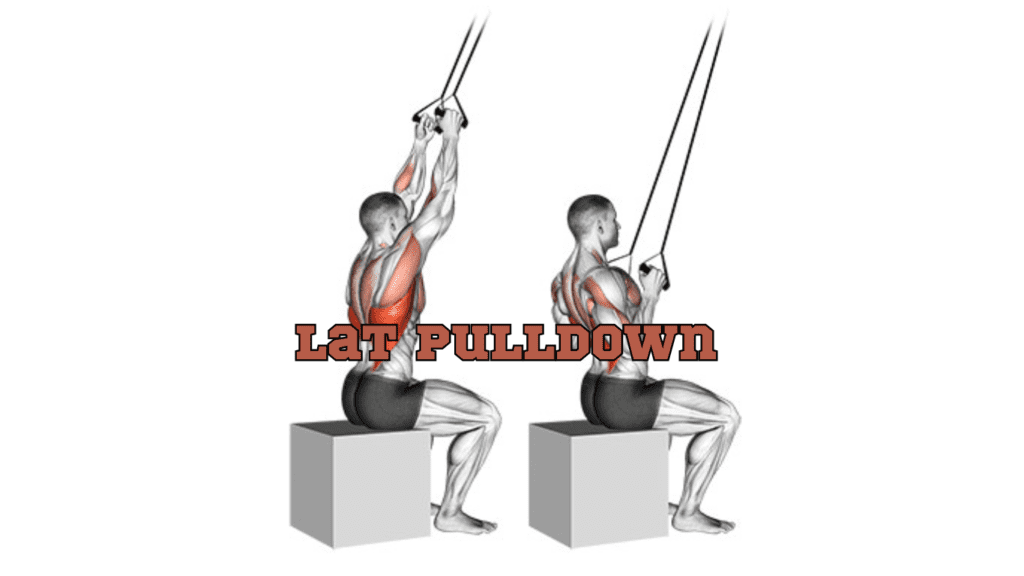
- Lat Pulldown Variation: This exercise targets the latissimus dorsi, or “lats,” which are the largest muscles in your back responsible for pulling movements. To perform a lat pulldown with resistance bands, anchor the band securely overhead. Sit or kneel down facing the anchor point, and grab onto the handles with an overhand grip. Pull the handles down towards your chest, squeezing your shoulder blades together at the bottom of the movement. Focus on keeping your back straight and core engaged throughout the exercise. For beginners, you can use lighter resistance bands or perform assisted lat pulldowns by kneeling closer to the anchor point.
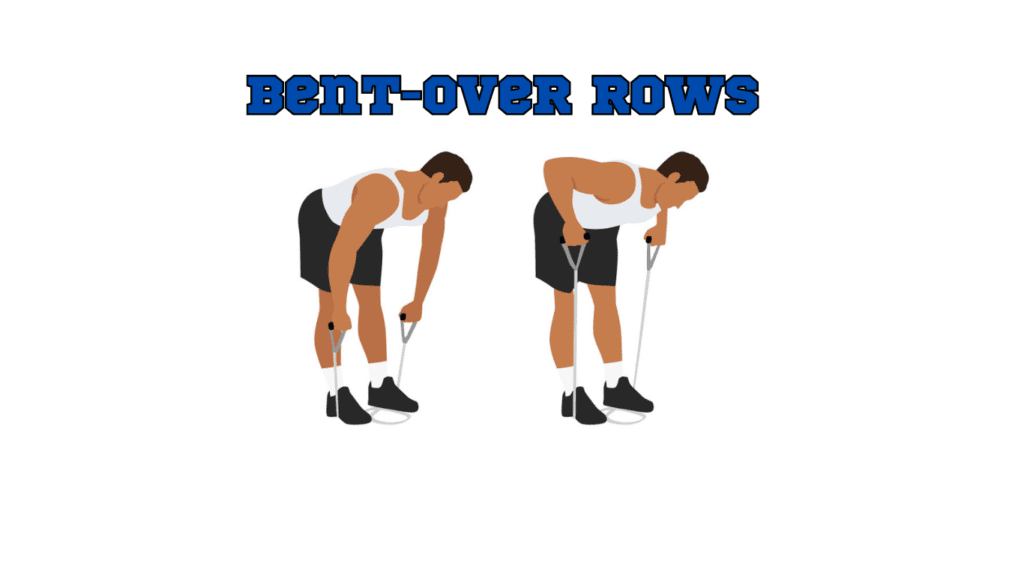
2.Bent-Over Rows: Bent-over rows are excellent for targeting the mid-back, rhomboids, and lower back muscles. Stand on the resistance band with your feet hip-width apart, holding onto the handles with an overhand grip. Hinge at the hips and bend your knees slightly, keeping your back flat and core engaged. Pull the handles towards your waist, driving your elbows back and squeezing your shoulder blades together at the top of the movement. Make sure to maintain proper form and avoid rounding your back. Beginners can start with lighter resistance bands or perform single-arm rows to focus on unilateral strength.
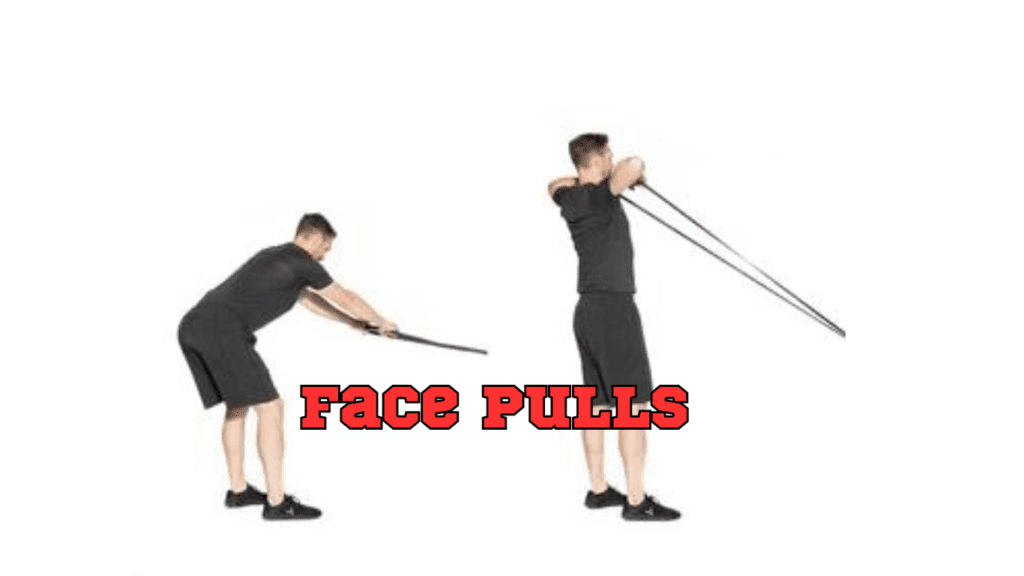
3.Face Pulls: Face pulls are great for strengthening the upper back, rear delts, and rotator cuff muscles. Attach the resistance band to a sturdy anchor point at chest height. Grab onto the handles with an overhand grip and step back until you feel tension in the band. Pull the handles towards your face, focusing on squeezing your shoulder blades together and keeping your elbows high and wide. Hold for a moment at the peak of the movement, then slowly release back to the starting position. To modify for beginners, use lighter resistance bands or perform the exercise seated to reduce stability requirements.
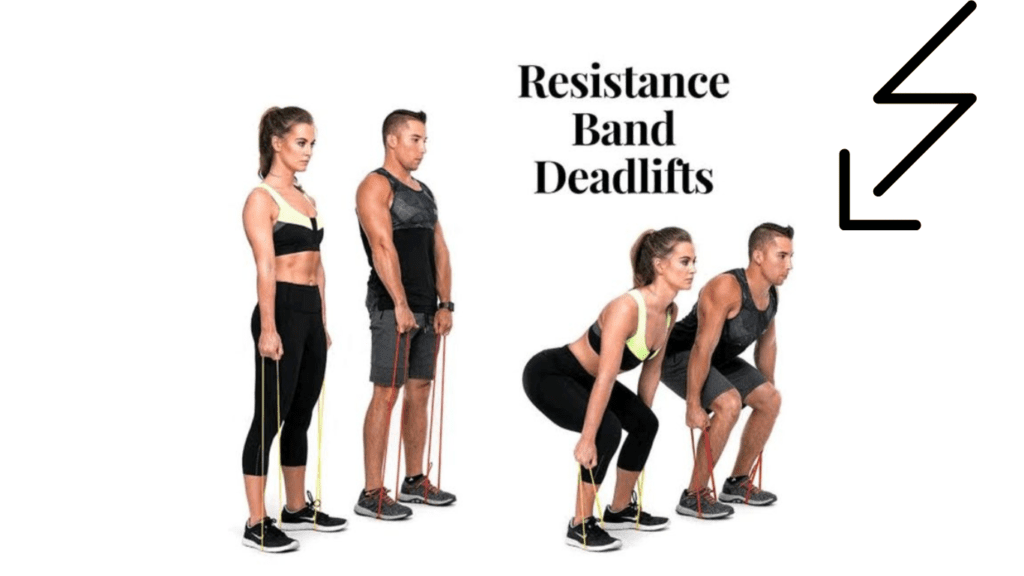
4.Deadlifts: Deadlifts are a compound exercise that targets the entire posterior chain, including the lower back, glutes, and hamstrings. Stand on the resistance band with your feet hip-width apart, holding onto the handles with an overhand grip. Hinge at the hips, pushing your hips back and keeping your back flat, until you feel a stretch in your hamstrings. Drive through your heels and squeeze your glutes as you stand up tall, pulling the handles up towards your hips. Maintain a neutral spine throughout the movement and avoid rounding your back. Beginners can use lighter resistance bands or perform Romanian deadlifts with slightly bent knees to reduce the load on the lower back.
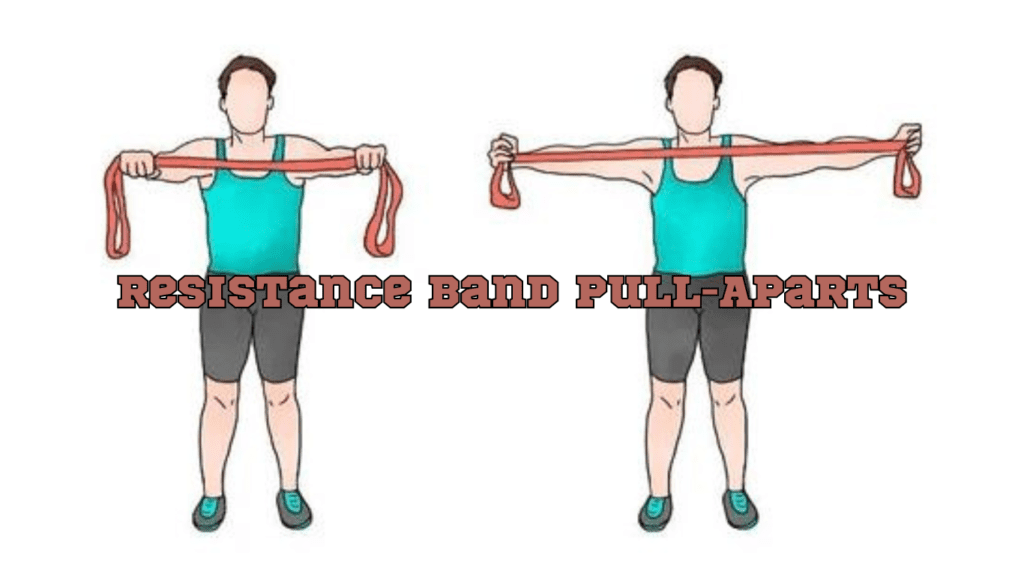
5.Resistance Band Pull-Aparts: This exercise targets the rear delts, upper back, and rotator cuff muscles. Hold onto the resistance band with an overhand grip, arms extended in front of you at shoulder height. Pull the band apart, squeezing your shoulder blades together and focusing on engaging the muscles of your upper back. Hold for a moment at the peak of the movement, then slowly release back to the starting position. Beginners can use lighter resistance bands or perform the exercise with a wider grip to decrease resistance.
Resistance Bands Back Workout Guide
| Exercise | Targeted Muscles | Instructions |
|---|---|---|
| Lat Pulldown Variation | Latissimus dorsi | Anchor band overhead, pull handles down towards chest, focus on squeezing shoulder blades together |
| Bent-Over Rows | Rhomboids, lower back | Stand on band, hinge at hips, pull handles towards waist, squeeze shoulder blades together |
| Face Pulls | Upper back, rear delts | Attach band to anchor point, pull handles towards face, focus on squeezing shoulder blades together |
| Deadlifts | Lower back, glutes, hamstrings | Stand on band, hinge at hips, pull handles towards hips, squeeze glutes at the top |
| Superman Pulls | Lower back, glutes | Lie face down, loop band around feet, lift chest and legs, pull handles towards hips |
| Resistance Band Pull-Aparts | Rear delts, upper back | Hold band at shoulder height, pull band apart, focus on squeezing shoulder blades together |
Remember to start with a proper warm-up and gradually increase the intensity and resistance as you become stronger. Listen to your body and make modifications as needed to ensure proper form and prevent injury. With consistency and dedication, these resistance bands back exercises will help you build a strong and resilient back that supports you in all your daily activities. So, grab your bands and let’s get to work!
Comparing with Weight Lifting
Let’s dive into the comparison between resistance bands back workout and traditional weight lifting exercises, focusing on their effects on the back muscles. As a personal trainer, I’ve had the privilege of witnessing firsthand the transformative power of both methods, so let’s break it down.
When it comes to traditional weight lifting exercises for the back, movements like barbell rows, lat pulldowns, and deadlifts are staples in any gym-goer’s routine. These exercises undoubtedly build strength and muscle mass, but they often rely on gravity for resistance, which can lead to limited muscle activation and potential strain on the joints, especially in the lower back.
On the flip side, resistance bands offer a unique form of resistance that challenges the muscles in a different way. By providing continuous tension throughout the entire range of motion, resistance bands promote muscle endurance and stability, particularly in the back muscles. This constant tension forces the muscles to work harder, leading to greater muscle activation and ultimately, better results.
Take the lat pulldown, for example. With traditional weight lifting equipment, the tension on the lats decreases as the bar is lowered towards the chest due to gravity. However, with resistance bands, the tension remains constant throughout the entire movement, ensuring maximum muscle engagement and activation. This not only leads to better muscle growth but also helps improve muscle endurance and stability in the back.
Similarly, deadlifts performed with resistance bands offer a unique challenge to the back muscles. While traditional deadlifts with barbells or dumbbells provide a great strength-building stimulus, they can be limiting in terms of range of motion and muscle activation. Deadlifts with resistance bands, on the other hand, allow for a greater range of motion and provide continuous tension on the back muscles throughout the entire movement. This helps strengthen the muscles along the entire length of the spine, improving stability and reducing the risk of injury.
Another advantage of resistance bands for back workouts is their versatility. Unlike traditional weight lifting equipment, which often comes in fixed weights and may not accommodate individuals of different strength levels, resistance bands can be easily adjusted to provide the appropriate level of resistance for each individual. Whether you’re a beginner or an advanced lifter, resistance bands can be tailored to suit your unique strength and fitness level, making them suitable for people of all ages and abilities.
Furthermore, resistance bands are incredibly versatile and adaptable to various environments. Whether you’re working out at home, in the gym, or on the go, resistance bands offer a convenient and effective way to target your back muscles. With just a set of bands and a few anchor points, you can perform a wide range of back exercises anytime, anywhere, without the need for bulky equipment or expensive gym memberships.
While traditional weight lifting exercises certainly have their place in a well-rounded fitness routine, resistance bands offer a unique set of advantages for back workouts. By providing continuous tension throughout the range of motion, promoting muscle endurance and stability, and accommodating different strength levels and environments, resistance bands are a valuable tool for anyone looking to build a strong and resilient back. So, whether you’re a seasoned lifter or just starting out on your fitness journey, don’t underestimate the power of resistance bands in sculpting a strong and healthy back.
let’s dive into the comparison between resistance bands back workout and traditional weight lifting exercises, focusing on their effects on the back muscles. As a personal trainer, I’ve had the privilege of witnessing firsthand the transformative power of both methods, so let’s break it down.
When it comes to traditional weight lifting exercises for the back, movements like barbell rows, lat pulldowns, and deadlifts are staples in any gym-goer’s routine. These exercises undoubtedly build strength and muscle mass, but they often rely on gravity for resistance, which can lead to limited muscle activation and potential strain on the joints, especially in the lower back.
On the flip side, resistance bands offer a unique form of resistance that challenges the muscles in a different way. By providing continuous tension throughout the entire range of motion, resistance bands promote muscle endurance and stability, particularly in the back muscles. This constant tension forces the muscles to work harder, leading to greater muscle activation and ultimately, better results.
Take the lat pulldown, for example. With traditional weight lifting equipment, the tension on the lats decreases as the bar is lowered towards the chest due to gravity. However, with resistance bands, the tension remains constant throughout the entire movement, ensuring maximum muscle engagement and activation. This not only leads to better muscle growth but also helps improve muscle endurance and stability in the back.
Similarly, deadlifts performed with resistance bands offer a unique challenge to the back muscles. While traditional deadlifts with barbells or dumbbells provide a great strength-building stimulus, they can be limiting in terms of range of motion and muscle activation. Deadlifts with resistance bands, on the other hand, allow for a greater range of motion and provide continuous tension on the back muscles throughout the entire movement. This helps strengthen the muscles along the entire length of the spine, improving stability and reducing the risk of injury.
Another advantage of resistance bands for back workouts is their versatility. Unlike traditional weight lifting equipment, which often comes in fixed weights and may not accommodate individuals of different strength levels, resistance bands can be easily adjusted to provide the appropriate level of resistance for each individual. Whether you’re a beginner or an advanced lifter, resistance bands can be tailored to suit your unique strength and fitness level, making them suitable for people of all ages and abilities.
Furthermore, resistance bands are incredibly versatile and adaptable to various environments. Whether you’re working out at home, in the gym, or on the go, resistance bands offer a convenient and effective way to target your back muscles. With just a set of bands and a few anchor points, you can perform a wide range of back exercises anytime, anywhere, without the need for bulky equipment or expensive gym memberships.
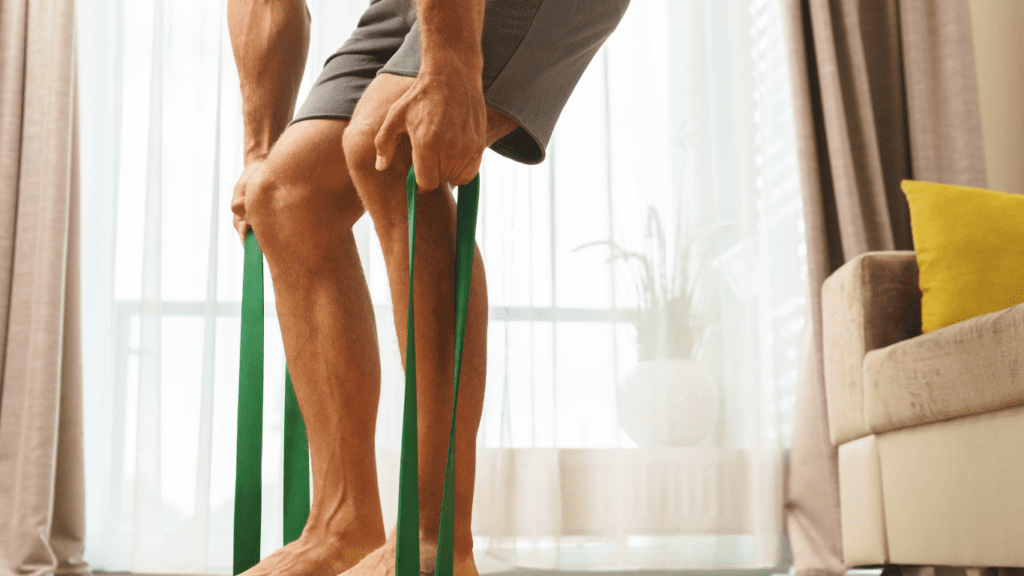
Comparison of Resistance Bands and Traditional Weight Lifting Equipment for Back Workouts
| Benefits | Resistance Bands | Traditional Weight Lifting |
|---|---|---|
| Portability | Lightweight, portable | Bulky, less portable |
| Versatility | Can target multiple muscle groups | Often isolates specific muscles |
| Joint-Friendly | Less strain on joints | May strain joints, especially lower back |
| Muscle Activation | Engages stabilizer muscles | Emphasizes larger muscle groups |
| Range of Motion | Allows for greater ROM | May have limited ROM |
| Adaptability | Adjustable resistance levels | Fixed weights, may not suit all strength levels |
| Cost | Affordable, no need for expensive equipment | Requires investment in equipment or gym membership |
| Accessibility | Can be used at home, gym, or on the go | Requires access to gym or specialized equipment |
| Progression | Easily increase resistance with thicker bands or more tension | Limited progression with fixed weights |
| Injury Risk | Lower risk of injury due to controlled resistance | Higher risk of injury if proper form is not maintained |
| Muscle Balance | Promotes balanced muscle development by engaging stabilizers | May lead to muscle imbalances if certain muscles are overemphasized |
While traditional weight lifting exercises certainly have their place in a well-rounded fitness routine, resistance bands offer a unique set of advantages for back workouts. By providing continuous tension throughout the range of motion, promoting muscle endurance and stability, and accommodating different strength levels and environments, resistance bands are a valuable tool for anyone looking to build a strong and resilient back. So, whether you’re a seasoned lifter or just starting out on your fitness journey, don’t underestimate the power of resistance bands in sculpting a strong and healthy back.
Practical Tips for Maximizing Your Resistance Bands Back Workout
Let’s get into the nitty-gritty of maximizing your resistance bands back workout. As a personal trainer dedicated to helping my clients achieve their fitness goals, I’ve picked up a few practical tips along the way that can take your back workout to the next level.
First things first, let’s talk about selecting the right resistance bands for your fitness level and exercise goals. When it comes to targeting the back muscles effectively, you want to choose bands that provide enough resistance to challenge your muscles without compromising your form. For beginners, starting with lighter resistance bands and gradually increasing the tension as you build strength is the way to go. On the other hand, more advanced lifters may opt for heavier resistance bands to really push their limits and stimulate muscle growth. It’s all about finding the right balance that allows you to perform each exercise with proper form while still feeling the burn in your back muscles.
Now, let’s dive into the importance of proper form and alignment. This cannot be overstated when it comes to resistance bands back workouts. Maintaining proper form not only maximizes muscle engagement but also helps prevent injuries. When performing exercises like rows or pulldowns, focus on keeping your back straight, core engaged, and shoulders pulled back and down. Avoid rounding your back or hunching your shoulders, as this can put unnecessary strain on your spine and lead to injury. By paying attention to your form and alignment, you’ll ensure that your back muscles are getting the most out of each and every rep.
Next up, let’s talk about progressive overload. This is key to continually challenging your muscles and stimulating growth over time. With resistance bands, there are several ways to incorporate progressive overload into your workouts. One option is to simply increase the tension of the bands by using thicker or shorter bands, or by doubling up on bands for added resistance. Another option is to incorporate advanced variations of exercises, such as single-arm rows or pull-aparts with a pause at the peak of the movement. These variations not only increase the challenge on your muscles but also help prevent plateauing and keep your workouts fresh and exciting. Remember, the key to progressive overload is to gradually increase the intensity of your workouts over time, allowing your muscles to adapt and grow stronger.
In addition to these tips, don’t forget to listen to your body and adjust your workouts accordingly. If you’re experiencing any pain or discomfort during an exercise, stop immediately and reassess your form. It’s better to take a step back and correct your form than to risk injury by pushing through the pain. And always remember to warm up properly before diving into your resistance bands back workout, as this helps prepare your muscles for the demands of exercise and reduces the risk of injury.
So there you have it—some practical tips for maximizing your resistance bands back workout. By selecting the right bands, focusing on proper form and alignment, and incorporating progressive overload, you’ll be well on your way to building a strong and resilient back. Keep pushing yourself, stay consistent with your workouts, and watch as your back muscles transform before your eyes.
Sample Resistance Bands Back Workout Routine
Unlocking a powerful back isn’t reserved for the gym’s clanging weights. Enter the world of resistance bands, where strength meets versatility for a back workout like no other. In this segment, we delve into the practical side of resistance bands back workouts, catering to individuals at different experience levels.
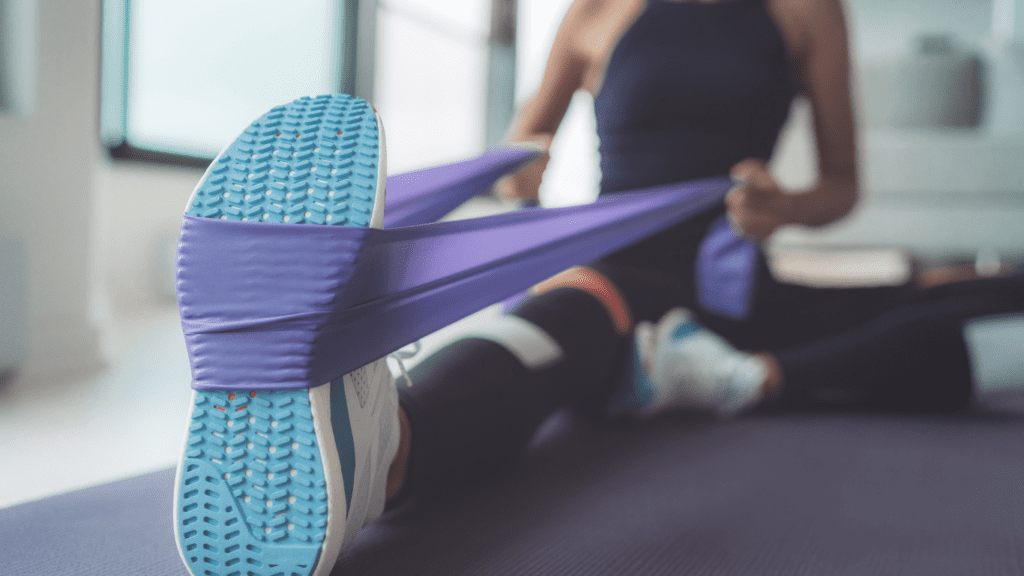
For Beginners (Back as Full Body Workout)
As a beginner, focusing on full-body workouts three times a week is a great way to build a solid foundation of strength and muscle. When incorporating resistance bands into your routine, it’s essential to start with manageable volume and intensity. Here’s a sample resistance bands back workout routine to incorporate into your full-body training days:
Lat Pulldown Variation:
- Exercise: Lat Pulldown Variation
- Sets: 3-5 sets
- Repetitions: 10-12 reps per set
- Rest: 60-90 seconds between sets
Instructions:
- Attach the resistance band securely overhead to a sturdy anchor point.
- Sit or kneel down facing the anchor point, keeping your back straight and core engaged.
- Grab the handles with an overhand grip, hands slightly wider than shoulder-width apart.
- Pull the handles down towards your chest, focusing on squeezing your shoulder blades together at the bottom of the movement.
- Slowly release back to the starting position and repeat for the desired number of repetitions.
- Rest for 60-90 seconds between sets, then repeat for a total of 3-5 sets.
This exercise targets the latissimus dorsi muscles effectively, helping beginners build strength and endurance in their back muscles. Start with a lighter resistance band to ensure proper form and technique, and gradually increase the resistance as you progress.
For Intermediate (Back as One of Two Muscle Groups in a Day)
Intermediate lifters can benefit from splitting their training sessions into different muscle groups, allowing for greater focus and intensity. Here’s a tailored routine for intermediate individuals:
Day 1: Back and Chest
- Lat Pulldown Variation:
- Aim for 4 sets of 10-12 reps
- Rest: 45-60 seconds between sets
- Bent-Over Rows:
- Perform 4 sets of 10-12 reps
- Rest: 45-60 seconds between sets
- Day 2: Legs and Back
- Deadlifts:
- Aim for 4 sets of 10-12 reps
- Rest: 45-60 seconds between sets
- Superman Pulls:
- Complete 4 sets of 10-12 reps
- Rest: 45-60 seconds between sets
For Advanced (Back as Dedicated Day Once a Week)
Advanced lifters can maximize back muscle engagement and promote growth by dedicating a day solely to back workouts once a week. Here’s a tailored routine for advanced individuals:
Back Day:
- Lat Pulldown Variation:
- Perform 5 sets of 8-10 reps
- Rest: 30-45 seconds between sets
- Bent-Over Rows:
- Complete 5 sets of 8-10 reps
- Rest: 30-45 seconds between sets
- Face Pulls:
- Aim for 5 sets of 8-10 reps
- Rest: 30-45 seconds between sets
- Deadlifts:
- Perform 5 sets of 8-10 reps
- Rest: 30-45 seconds between sets
- Superman Pulls:
- Complete 5 sets of 8-10 reps
- Rest: 30-45 seconds between sets
By tailoring the resistance bands back workout routine to individual experience levels, each individual can effectively target their back muscles while making progress towards their fitness goals. Focus on proper form, gradually increase intensity, and listen to your body to avoid overtraining or injury. With consistency and dedication, building a strong, powerful back with resistance bands is within reach for everyone.
Final Thoughts
As we conclude our exploration into resistance bands back workouts, let’s distill the essence of our journey into actionable insights. Throughout this article, we’ve uncovered the remarkable effectiveness and versatility of resistance bands in fortifying our back muscles.
Resistance bands stand as a testament to innovation in fitness equipment, offering a compact yet potent tool for sculpting a robust back. Their portability, affordability, and adaptability make them a game-changer for individuals seeking to enhance their back strength, whether at home, in the gym, or on the go.
We’ve delved into a repertoire of essential back exercises using resistance bands, each meticulously designed to target different facets of our back musculature. From the Lat Pulldown Variation to Bent-Over Rows, Face Pulls, Deadlifts, Superman Pulls, and Resistance Band Pull-Aparts, these exercises form the cornerstone of a well-rounded back workout regimen.
But it’s not just about the exercises; it’s about how we incorporate them into our fitness routines. We’ve tailored sample workout routines catering to individuals at varying experience levels. Whether you’re a beginner seeking to integrate back exercises into your full-body workouts, an intermediate lifter splitting your training sessions, or an advanced enthusiast dedicating a day solely to back workouts, there’s a roadmap for you to follow.
Yet, amidst the structured routines and technicalities, there lies a deeper truth: the journey towards a stronger back is as much about consistency as it is about technique. It’s about showing up, day in and day out, and putting in the work with intention and dedication.
So, I invite you to embark on this journey with a newfound appreciation for the power of resistance bands. Embrace the challenge, explore the possibilities, and witness the transformation unfold—one rep at a time.
As we part ways, I leave you with a simple yet profound invitation: dare to defy limits, embrace resilience, and let your back be a testament to the strength that lies within. And remember, your journey doesn’t end here—it’s just the beginning of a lifelong pursuit of greatness.
I look forward to hearing your stories of triumph, your moments of revelation, and your continued evolution as you harness the power of resistance bands to sculpt a back that stands tall and proud.
Together, let’s redefine what’s possible and embark on a journey towards a stronger, more resilient back with resistance bands as our faithful companions.
